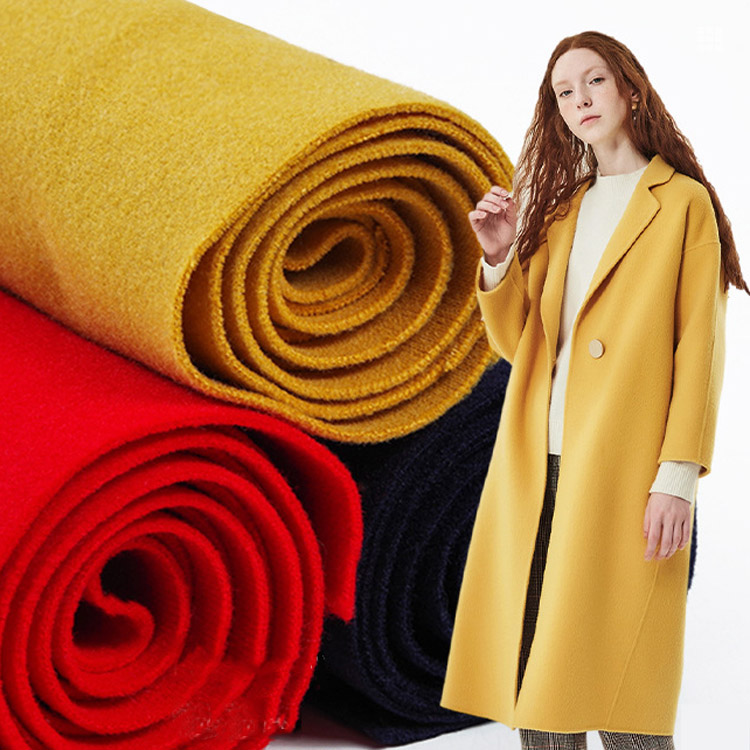 English
English Español
Español  Português
Português  русский
русский  Français
Français  日本語
日本語  Deutsch
Deutsch  tiếng Việt
tiếng Việt  Italiano
Italiano  Nederlands
Nederlands  ภาษาไทย
ภาษาไทย  Polski
Polski  한국어
한국어  Svenska
Svenska  magyar
magyar  Malay
Malay  বাংলা ভাষার
বাংলা ভাষার  Dansk
Dansk  Suomi
Suomi  हिन्दी
हिन्दी  Pilipino
Pilipino  Türkçe
Türkçe  Gaeilge
Gaeilge  العربية
العربية  Indonesia
Indonesia  Norsk
Norsk  تمل
تمل  český
český  ελληνικά
ελληνικά  український
український  Javanese
Javanese  فارسی
فارسی  தமிழ்
தமிழ்  తెలుగు
తెలుగు  नेपाली
नेपाली  Burmese
Burmese  български
български  ລາວ
ລາວ  Latine
Latine  Қазақша
Қазақша  Euskal
Euskal  Azərbaycan
Azərbaycan  Slovenský jazyk
Slovenský jazyk  Македонски
Македонски  Lietuvos
Lietuvos  Eesti Keel
Eesti Keel  Română
Română  Slovenski
Slovenski  मराठी
मराठी  Srpski језик
Srpski језик
How much influence does the textile process of woolen fabric have on the warmth-keeping effect?
2025-07-14
The warmth-keeping effect of woolen fabric is not determined solely by the wool itself. Differences in textile processes can cause a 30%-50% fluctuation in warmth-keeping performance. Every step from spinning to finishing affects the final ability to keep out the cold.

Spinning process is the foundation. The wool spinning process retains the natural curl of wool (3-4 curls per centimeter), forming more air storage space between fibers, and the warmth-keeping property is more than 25% higher than that of worsted spinning, which is suitable for heavy winter fabrics. The worsted spinning process combs the wool straighter, the fabric has a high density but low fluffiness, and the warmth-keeping property is weaker, which is more suitable for spring and autumn fabrics.
The weaving structure has a significant impact. The plain weave is compact, with high fiber density per unit area, but less air retention and average warmth retention; the twill weave is slightly loose, and the air layer formed by the fiber gap can increase the warmth retention effect by 15%; the rib and double-sided jacquard weave form a three-dimensional structure through interlaced weaving, and the air interception is 40% higher than the plain weave, which is the preferred process for winter wool sweaters.
The finishing process determines the heat lock ability. The shrinking process makes the wool fibers entangled with each other, the fabric thickness increases by 20%-30%, and fine fluff is formed on the surface to reduce heat loss; the plush surface created by the napping process can reduce the thermal conductivity by 30%, but it is easy to pilling. The warmth retention of woolen fabrics that have not been finished will decrease by about 20%.
The fiber blending ratio needs to be scientifically formulated. Pure woolen fabrics have good warmth retention but are easy to shrink. Adding 10%-20% acrylic can enhance the fluffiness and improve warmth retention by 10%. Although elastic woolen fabrics mixed with 5%-10% spandex have enhanced tensile properties, excessive stretching will destroy the fiber gaps and may reduce warmth retention by 5%-8%.
The choice of process needs to be combined with the usage scenario. In the cold northern regions, woolen fabrics with coarse spinning + double-sided jacquard + shrinking process are suitable; in the cold and humid southern environment, the focus can be on worsted spinning + twill process, which takes into account warmth retention and breathability. Only by understanding the impact of the process on warmth retention can we choose wool products that are truly suitable for our needs and avoid the purchase misunderstanding of "only looking at the wool content and ignoring the process details".
-
E-mail
-
Call Us
-
Address
Guancheng International Keqiao Shaoxing, Zhejiang, China
If you have any enquiry about quotation or cooperation, please feel free to email or use the following inquiry form. Our sales representative will contact you within 24 hours.
Copyright © 2022 Zhejiang Jufei Textile Co., Ltd.- Woolen Fabric, Knitting Fabric, Woven Fabric -All Rights reserved.





